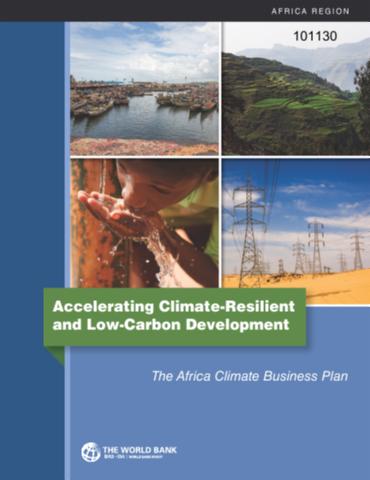The World Bank is a vital source of financial and technical assistance to developing countries around the world. We are not a bank in the ordinary sense but a unique partnership to reduce poverty and support development. The World Bank Group has two ambitious goals: End extreme poverty within a generation and boost shared prosperity.
- To end extreme poverty, the Bank's goal is to decrease the percentage of people living on less than $1.25 a day to no more than 3% by 2030.
- To promote shared prosperity, the goal is to promote income growth of the bottom 40% of the population in each country.
The World Bank Group comprises five institutions managed by their member countries.
The World Bank Group and Land: Working to protect the rights of existing land users and to help secure benefits for smallholder farmers
The World Bank (IBRD and IDA) interacts primarily with governments to increase agricultural productivity, strengthen land tenure policies and improve land governance. More than 90% of the World Bank’s agriculture portfolio focuses on the productivity and access to markets by small holder farmers. Ten percent of our projects focus on the governance of land tenure.
Similarly, investments by the International Finance Corporation (IFC), the World Bank Group’s private sector arm, including those in larger scale enterprises, overwhelmingly support smallholder farmers through improved access to finance, inputs and markets, and as direct suppliers. IFC invests in environmentally and socially sustainable private enterprises in all parts of the value chain (inputs such as irrigation and fertilizers, primary production, processing, transport and storage, traders, and risk management facilities including weather/crop insurance, warehouse financing, etc
For more information, visit the World Bank Group and land and food security (https://www.worldbank.org/en/topic/agriculture/brief/land-and-food-security1
Resources
Displaying 631 - 635 of 4906Agriculture in Nicaragua
This work summarizes background papers prepared for the World Bank Group with significant input from government counterparts and other development partners. It takes stock of major recent developments and argues that a lot has been achieved in the last decade in terms of production of commodities for export and food consumption, with favorable impact on rural poverty reduction. It also argues that the two factors driving the recent agricultural performance, namely favorable international prices and expansion of the agricultural frontier, have reached their limits.
Climate change impacts and mitigation in the developing world: an integrated assessment of the agriculture and forestry sectors
This paper conducts an integrated assessment of climate change impacts and climate mitigation on agricultural commodity markets and food availability in low- and middle-income countries. The analysis uses the partial equilibrium model GLOBIOM to generate scenarios to 2080. The findings show that climate change effects on the agricultural sector will increase progressively over the century. By 2030, the impact of climate change on food consumption is moderate but already twice as large in a world with high inequalities than in a more equal world.
Accelerating Climate-Resilient and Low-Carbon Development
The objective of this transport component of the broader Africa Climate Business Plan (ACBP) is to begin to mainstream climate benefits into the World Bank’s transport program for Sub-Saharan Africa, the better to assist African countries in bringing their climate change efforts to scale.
Country Partnership Framework for the Republic of Cote d'Ivoire for the Period FY16-FY19
This Country Partnership Framework (CPF)
presents the World Bank Group (WBG) program for Côte
d’Ivoire (CIV) during the period FY16-FY19. The CPF comes at
an opportune moment to accelerate and scale up the WBG
engagement. The program will take advantage of CIV’s current
climate of renewed stability to modernize the economy and
eliminate long-standing disparities aggravated by a decade
of multifaceted crisis, during which the World Bank Group
Country Partnership Framework for the Repbulic of El Salvador for the Period FY2016-FY2019
El Salvador is the smallest country in
Central America, and one of the most densely populated in
the world. El Salvador is among the countries most affected
by weather-related events and other hazards, incurring
annual losses of around 2.5 percent of GDP. Worldwide, it
ranks second highest for risk exposure to two or more
hazards and highest for the total population at a relatively
high risk of mortality. Furthermore, climate change is









